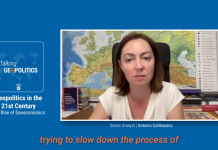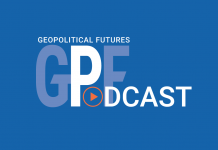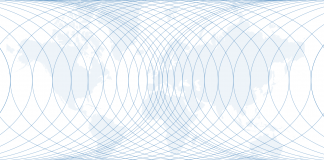Though “supply chain” became a household term only in the past generation, it has been around since humans have been engaging in commerce. One group had fish and the other had arrowheads. In order to fish, the fishermen needed nets, which another group provided, while the arrowheads went to a group that could hunt for animals, whose kill disseminated through the system by exchange with those providing arrowheads. This is obviously a poorly thought out scenario, but all I want to convey here is that supply chains are integral to human life, and always complex. Human beings need many things in order to live, and they are divided into many groups that care for themselves. This inevitably leads to trade and at times to war, which happens when one group tries to use the needs of another group to force them to submit. The supply chain has always been with us.
Economists tend to focus on the financial system, which is an abstraction of the physical system of production, consumption and trade. This method is essential for a high-level understanding of the economy, but the economy is, at root, not abstract. A component of a cellphone is made in one place and moved to another, where it is merged with others to make a cellphone. From there it travels to another place, where it is stored, shipped and used by a customer. The cellphone contains an enormous number of parts, and the parts are most efficiently made in different places.
All of this is the essence of geopolitics. Geopolitics is about place. It is about where things are made, how they move to different places in the production process and how they reach the consumers who use them. Obviously there is a financial aspect in both defining the physical reality of the supply chain and defining the total financial impact on the system. The supply chain depends on what is needed for a product, where it is produced and the price paid for acquiring it. Taken together, all these transactions must be stated financially since they are incomprehensibly complex in material terms.
Two things help define supply chains. One is availability; there are some things that are available only in one place or another. The second is price; in some places the cost of production is lower, frequently because the cost of labor is lower. A business survives on the quality of the product it sells and the price relative to competitors. The business understands the components that go into production, and it understands its supply chain far better than those of us thinking about it geopolitically, financially or politically.
World War II was to an extent based on destroying the enemies’ supply chain from the air or sea. The United States analyzed the German military supply chain and realized that two critical elements were necessary to them: oil and ball bearings. The American air campaign attacked Ploesti, Romania, to cripple Germany’s oil supply and a number of ball bearing plants to limit production of aircraft and vehicles – or at least this was the intent. The Germans wanted to break the supply chain from the U.S. to Britain using submarines. The U.S. used submarines to break the Japanese supply line to Southeast Asia. The U.S. advantage in World War II was that it physically possessed most of the elements needed to construct the means of war and that the finished products were not vulnerable to enemy attack until shipped or in combat. No other power was so self-contained.
After World War II, the common understanding of why both world wars took place was nationalism. It was understood that there were different nations with different cultures, but the cause of the war was the German fear of insufficient access to minerals and agriculture; the British fear that it would lose access to India and its riches that drove its industry; the Japanese fear that it would lose access to minerals it had to have; and the Soviet fear of not being able to protect its resources and materials.
One way to look at war is that it is about supply chains. The idea is that a world that could depend on access to the components needed for its economy to function would be a more peaceful world. Hence the creation of Bretton Woods and the Marshall Plan to reconstruct industrial plants and trade among the defeated. But the world was far more complex than that. The Soviet Union and the United States were locked in a near-war system, and the Soviets constructed their own economy and supply chain to immunize themselves from however the U.S. might use supply chains against them. The supply chain was poorly organized and poorly fed. The American-sponsored supply chain was vastly richer. Once the Soviet Union fell, the assumption was that we were entering an era of peace to be achieved once Russia and China were integrated into the global supply chain. The Chinese were particularly successful, offering low labor costs and efficient shipment, which caused many nations, including the United States, to shift their supply chains from a nationally focused system to one far more international, or more specifically, Chinese.
The post-World War II understanding was that free trade, or more precisely a diffused supply chain, would increase mutual dependence and decrease the probability of war. To a great extent it worked. There has been no world war since 1945. But the supply chain depended on trust that neither side would disrupt the supply chain in order to increase control over the other. The buyer would not try to coerce a desperate seller. The seller would not sell but refuse to buy other goods. The seller would not experience internal breakdown and would always be able to supply what was needed.
The world’s two largest economies, the U.S. and China, formed a unique relationship with intertwined economies. Obviously this would lead to friction as each side chose to take advantage of the other, and such tension frequently led to war, but in this case it led to friction short of war. China’s dependence on the U.S. market, and the American dependence on its supply chain, increasingly created unease. A world of integrated supply chains and consumption must be a world that trusts. Trust is hard to create.
The supply chain was a business dependency. But the supply chain was also a political matter. The pricing of goods might benefit the U.S. and Chinese business partners but could lead to social stresses in the United States – that is, the decline of U.S. industry. Business might demand that imbalances in the relationship with China be rectified by political intervention. Businesses are necessarily narrow in their view of the world. Politics can’t be. This, in turn, created tension in the U.S. and China, with unpredictable consequences.
The supply chain bound together two countries that did not simply have an interest in free trade but an interest in advantageous trade. And then all hell broke loose with the coronavirus. Natural disasters happen frequently, but a single, paralyzing disaster is hard to recall. The internal U.S. supply chain is degraded, so the ability to consume Chinese products has declined. China’s ability to provide products – particularly given psychological and biological fears in the U.S. – also declined.
I ordered a new thermometer from Amazon, the heart of the American and even global supply chain, which connects producers and consumers and ships the product. I received it several weeks later from China. The Chinese supply system used Amazon to supply a customer but created a new delivery system. It was a pre-Amazon system. The supply chain always seeks pathways.
We try to control the virus in the U.S., and China tries to control it in China, and neither has done a particularly good job, assuming that a good job is even possible. The intertwining of China’s production system and the American consumption system compounds the complexity of things. The more complex a system is, the more likely it is to fail, and the harder it is to fix.
The architects of the post-World War II world sought to limit war by increasing trade and securing supply chains. History will judge how well that worked. I think they missed the problem of complexity. By creating a global system, they created massive physical complexity. They also created massive political complexity. The interest and cultures of two nations are different. In the event of a joint national disaster, each one may act differently as both have different nations to care for. The supply chain can shift, but taken as a whole, not quickly. So aside from an act of God, dealing with the supply chain is not coordinated, and each nation’s solution can undermine the interests of another.
Complexity has its virtues. It also has its price. Binding nations together in trade can limit war. It can also lead to one nation taking advantage of others, particularly when the system breaks down as it has now. Yet neither can separate itself from the other, while neither trusts the other. There are multiple paths to conflict. This is a novel one.






 Special Collection – The Middle East
Special Collection – The Middle East